Last updated on September 29, 2023

Argothian Enchantress | Illustration by Daren Bader
On today’s MTG mechanics menu we have shroud.
Efficient removal has been omnipresent in Constructed formats since the dawn of Magic. Many an entrenched Magic player has explained the “dies to Doom Blade” argument, one that suggests that any creature that dies to an efficient removal spell is greatly diminished in power level. Being able to dodge spells like Lightning Bolt, Swords to Plowshares, and Mind Control is incredibly valuable. Shroud was one of the earliest mechanics that allowed creatures to do this.
From a design philosophy, shroud was one of the first mechanics that didn’t affect combat. It doesn’t provide any inherent advantage in dealing damage unlike all the mechanics introduced in Alpha. This mechanic is so important because it elevates creatures beyond their combat capabilities and allows them to be evaluated on an axis where size and efficiency isn’t necessarily everything. While the keyword protection existed earlier, that mechanic was much more brutal in its purpose at the time and a significant combat boost in providing immunity against a whole color.
But how does shroud work, and why is it so important? Let’s dig in!
How Does Shroud Work?

Sylvan Safekeeper | Illustration by Magali Villeneuve
Shroud basically means that neither you nor your opponent can target a permanent. Or, in some rare cases, a player with shroud. Pretty much any spell or ability that has the word “target” doesn’t work if the creature (or player) it would target has shroud.
For the sticklers, here are the rules text of shroud:
702.18 Shroud
702.18a Shroud is a static ability, “Shroud” means “This permanent or player can’t be the target of spells or abilities.
MTG Comprehensive Rules
The History of Shroud in MTG
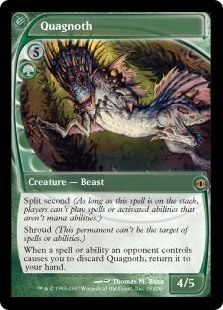
Shroud has a fairly long history as a mechanic, with cards as early as Legends featuring it. From that point in 1994 until 2007 it spent a long, long time without a keyword. Shroud first earned that status on Quagnoth in Future Sight.
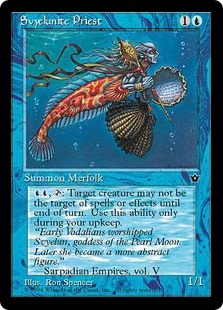
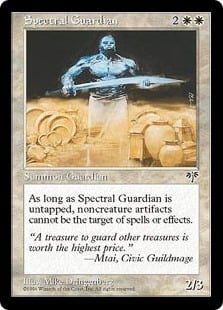
Shroud originally appeared pretty sparingly, and most cards that mentioned it only got it after paying some sort of cost or in specific situations, like on Svyelunite Priest and Spectral Guardian.
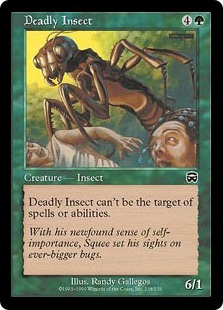
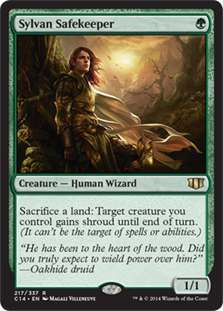
If you’ve read my previous pieces then you know that I have a mild adoration for Olle Rade’s Pro Tour-winning deck, one that featured Deadly Insect as a large threat that eluded the aforementioned Lightning Bolt and Swords to Plowshares. That win eventually earned him his face on Sylvan Safekeeper, a card that’s played extensively in Legacy even today.
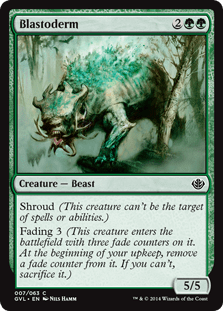
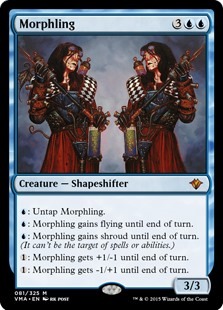
Creatures with shroud have an important place in Magic’s history as an answer to decks with strong interaction. Blastoderm was an important centerpiece to the Fires of Yavimaya deck that dominated the Pro Tour in 2000. Morphling was considered the best creature ever printed for a while, and it also showed up in the Pro Tour.
Shroud was an evergreen mechanic featured in the highest levels of Magic over and over again until it was basically replaced by hexproof in 2011.
Hexproof vs. Shroud
Hexproof became the “new and improved” shroud as of 2011. Originally featured on Taoist Hermit and Zuo Ci, the Mocking Sage, hexproof was pretty rare until it was formally keyworded in Magic 2012. It was colloquially referred to as “trollshroud” until then for its similarity to shroud and two notable creatures it was featured on: Troll Ascetic and Thrun, the Last Troll.

Shroud hasn’t been featured on a single new printing since then. The last creature to be printed with the ability was Neurok Commando.
Shroud as a mechanic is mostly just a worse version of hexproof. The biggest difference is that hexproof allows the permanent with the ability to be the target of spells by its controller, allowing that player to buff their creature with auras and equipment while shroud doesn’t. Interestingly enough, there now exist a number of scenarios where shroud is better than hexproof thanks to cards like Shadowspear.
Hexproof was introduced in part because it makes more sense intuitively to cast spells to strengthen the creatures you summon instead of being unable to do so because of their aversion to magic. After all, why shouldn’t you be able to hand over a Loxodon Warhammer to your creature just because you already equipped them with a pair of Lightning Greaves?
And so shroud was sunset and hexproof came to stay.
Does Shroud Protect from Abilities as well as Spells?
A shrouded creature not only evades the watchful glare of opposing players but also of their minions! Keep in mind that shroud only stops targeting, so your shroud creatures are still subject to things that affect “all creatures” as well as static abilities.
Does Shroud Prevent Equipment?
As part of the equip ability, the equipment is attached “to target creature you control.” Given that creatures with shroud can’t be the target of spells or abilities, that means they can’t be the target of equip abilities. Once your creature is wearing Lightning Greaves or Whispersilk Cloak it can’t pick up a Loxodon Warhammer or don Champion's Helm.
Does Shroud Protect from Board Wipes?
One of the important parts of board wipes is that they’re indiscriminate. They destroy all creatures, regardless of targetability. This also goes for spells like Pyroclasm which deal damage to each creature instead of targeting anything specific.
Can a Card with Shroud be Countered?
Shroud only applies to permanents or players, so any cards with shroud only have that ability kick in when they’re on the battlefield. So unless your card with shroud is Blurred Mongoose it can be countered (barring any other effects).
Does Shroud Work in Your Hand?
Shroud only applies to players and permanents when they’re in play. So effects that cause you to discard your spells with shroud still work unless the card in question is Quagnoth.
Can You Sacrifice a Creature with Shroud?
When your opponent casts something like Diabolic Edict, if the only creature you control is a shroud creature, you have to sacrifice it! Keep in mind that this can also work in your favor if you want to sacrifice your creature for some greater purpose.
Can You Block a Creature with Shroud?
Shroud only applies to spells and abilities, so blocking isn’t subject to shroud in any way. If you need to sneak a creature through both your opponent’s spells and their creatures, I recommend the services of Whispersilk Cloak.
Does Shroud Prevent Deathtouch?
Deathtouch is an ability that reads, “when this creature deals damage to another creature, destroy that creature.” Since there’s no targeting involved in applying this effect a creature with shroud still dies when it steps on something like Sedge Scorpion.
What if an Enchanted Creature Gains Shroud?
Shroud only stops targeting. If a creature gains shroud then effects that were already applied still stay on. Enchantments that are attached to a permanent that gains shroud stay attached to the permanent in question.
There are a number of auras that give shroud to the creature that they’re attached to, like Aspect of Mongoose. But keep in mind that once these creatures have shroud you can’t target them with any more auras.
Can a Player Have Shroud?
This is a lot less common than a creature gaining shroud, but players can indeed get shroud.
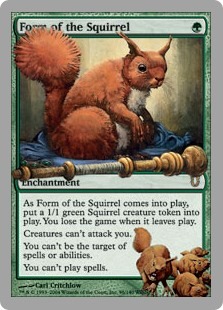
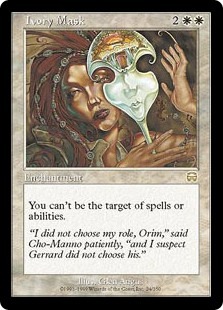
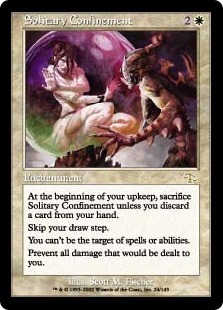
There are only two (well, three, if you count Form of the Squirrel) cards that give players shroud: Ivory Mask and Solitary Confinement. The rarity of this effect indicates the power of shroud.
How Can You Get Around Shroud?
There are three ways that come to mind when dealing with shroud creatures. The first is wrath effects, the second is Edict effects, and the third is to find a way to make the creature lose shroud.
Wrath of God effects are straightforward. Being able to destroy everything tidies up shroud creatures nicely. “Edicts” is a term for effects that cause players to sacrifice creatures, termed from the aforementioned Diabolic Edict. Decks that use the shroud mechanic don’t often play a swarm of creatures alongside them, so plinking off a creature with shroud using an Edict effect is a time-honored tradition.
Lastly, there are a select few cards that can cause creatures to lose their abilities. Cards like Polymorphist's Jest, Humility, and Dress Down divest creatures of all of their abilities, including shroud. Following that pretty much any removal spell does the trick.
Best Shroud Cards
Here’s my personal list of the best cards featuring the shroud mechanic that have made ripples across both casual and competitive play. I evaluated cards for their current functionality and for their historic greatness.
Honorable Mentions
Blastoderm and Giant Solifuge deserve a quick spotlight. Ol’ Blasty and Cap’n Tickles might not quite crack the top 10, but both cemented their spot in history as prominent pieces in Pro Tour decks, the former in 2000’s Pro Tour Chicago and the latter in 2006’s Pro Tour Honolulu.
#10. Crystalline Sliver
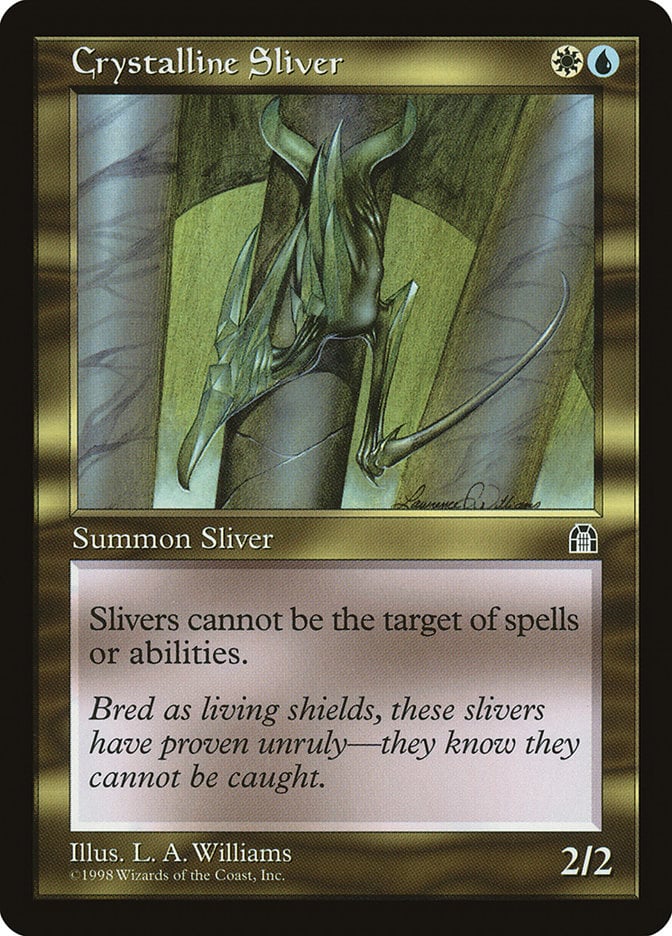
While slivers come in all shapes and sizes, Crystalline Sliver is probably the one that makes its deck competitive beyond casual formats. It answers a weakness many tribal strategies have, which is being vulnerable to spot removal. And unlike many other lords, it also gives shroud to itself.
#9. Simic Sky Swallower
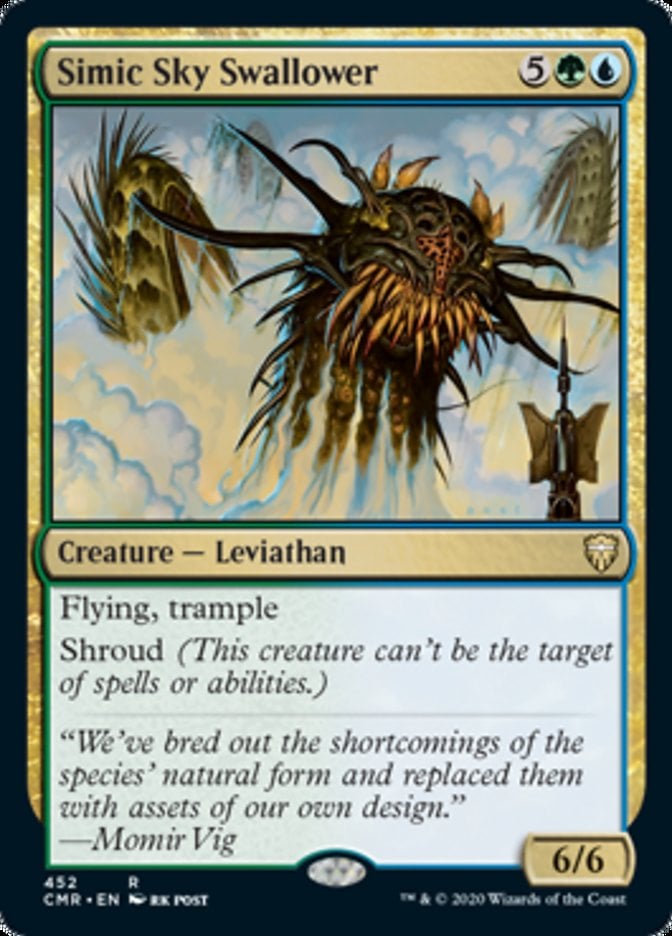
Simic Sky Swallower was one of the bigger monsters you could cheat out in its time. Known for being a strong finisher during its time in Standard and block Constructed, this leviathan showed up in a couple Vintage decks as a creature you could cheat out with Oath of Druids. Reprinted in Modern Masters 2017 and Iconic Masters, this card was an utter terror in those Limited formats.
#8. Nimble Mongoose
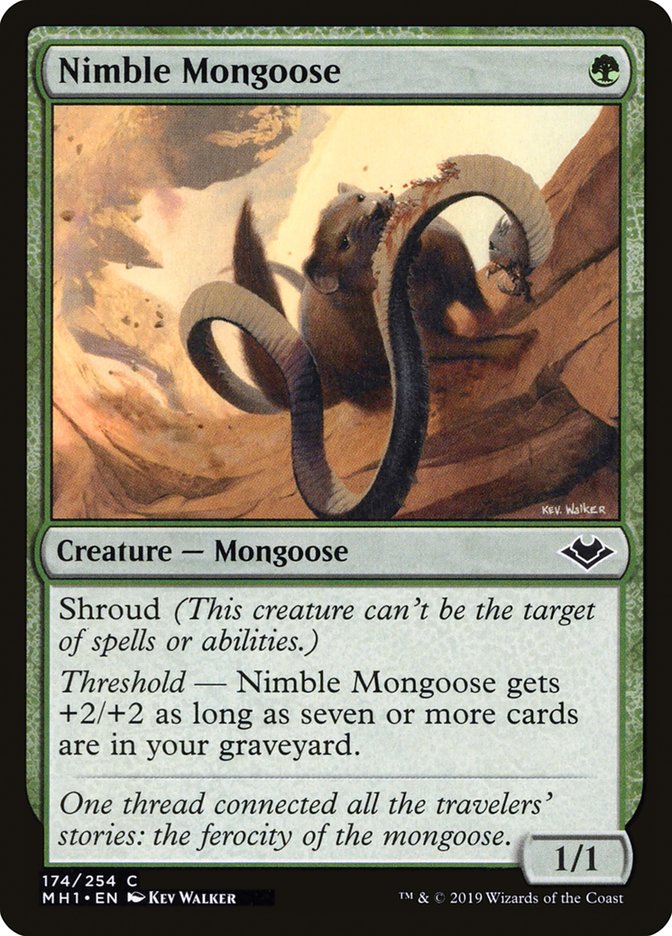
Nimble Mongoose is one of those cards that achieved a cult following in Magic. For some the RUG delver (or Canadian threshold) aesthetic of early 2010s Legacy was the high-water mark of MTG. In those days when the only delve threat was Tombstalker, before Deathrite Shaman, Ragavan, Nimble Pilferer, and the like highlighted peak efficiency among 1-mana threats, Mongoose was the card that let you slowly whittle down your opponents when your Delver of Secrets and Tarmogoyf were too vulnerable to removal.
Mongoose’s time in the sun has passed, but it’s cherished nonetheless.
#7. Sterling Grove
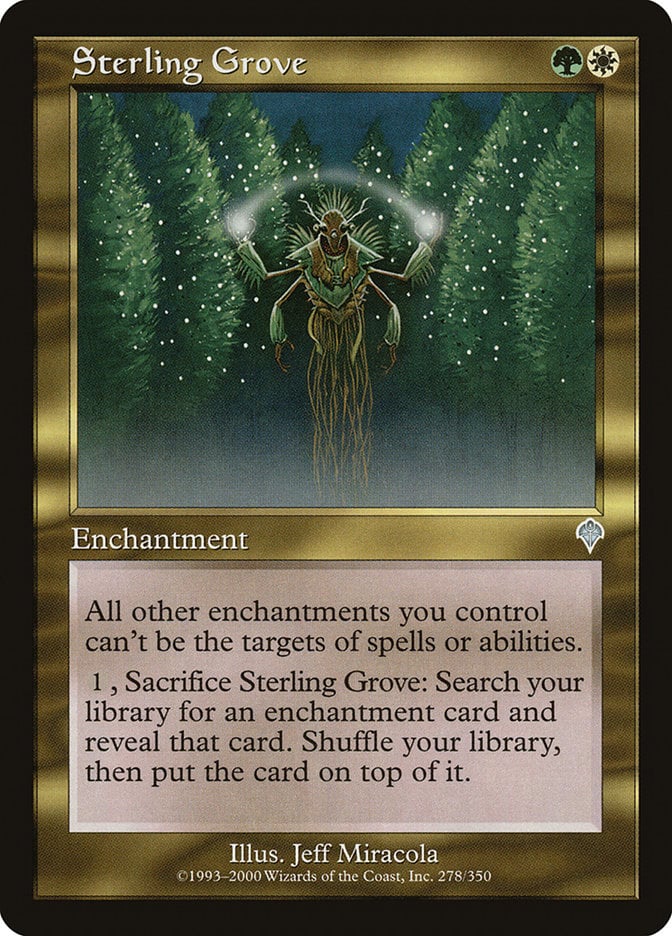
One of the core cards of the Enchantress archetype in Legacy, Sterling Grove largely made other enchantments you controlled invulnerable to interaction. Having two of them out let them give each other shroud, which was a way to slowly lock your opponent out of the game. Having the ability to sacrifice itself when targeted with some form of removal is also a huge plus, letting it potentially find another copy of itself.
Reprinted in Modern Horizons 2, Grove was part of a slew of cards that brought Enchantress strategies to existence in Modern.
#6. Inkwell Leviathan
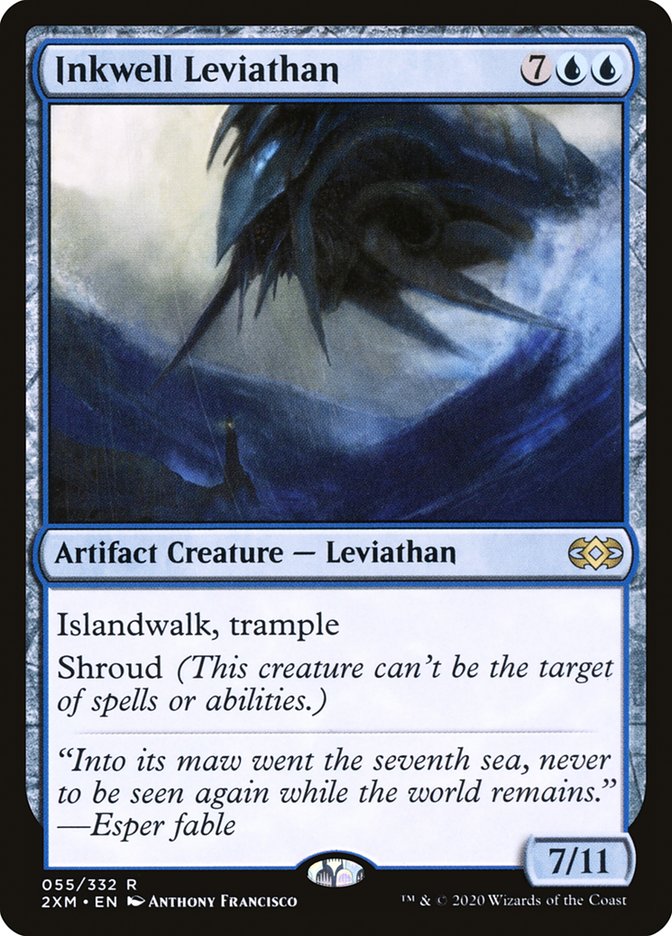
Inkwell Leviathan was one of the best fatties to cheat into play for a time, be it with Reanimate or Tinker. Combining shroud with islandwalk makes it a very hard to interact with a 3-turn clock against most fair blue strategies and is still generally very strong against the non-blue decks.
Bigger, scarier threats dwell in the graveyard these days, but Inkwell still shows up in a lot of Cube Draft formats.
#5. Eladamri, Lord of Leaves

Eladamri, Lord of Leaves is very similar to Crystalline Sliver in that it gives itself shroud along with all the little green men surrounding it.
On the one hand, Eladamri has a far more relevant creature type than Crystalline, but on the other hand, most elf strategies are faster and more combo-oriented in killing their opponents. But Eladamri is still a terrifying addition to any elf-themed Commander deck.
#4. Lightning Greaves
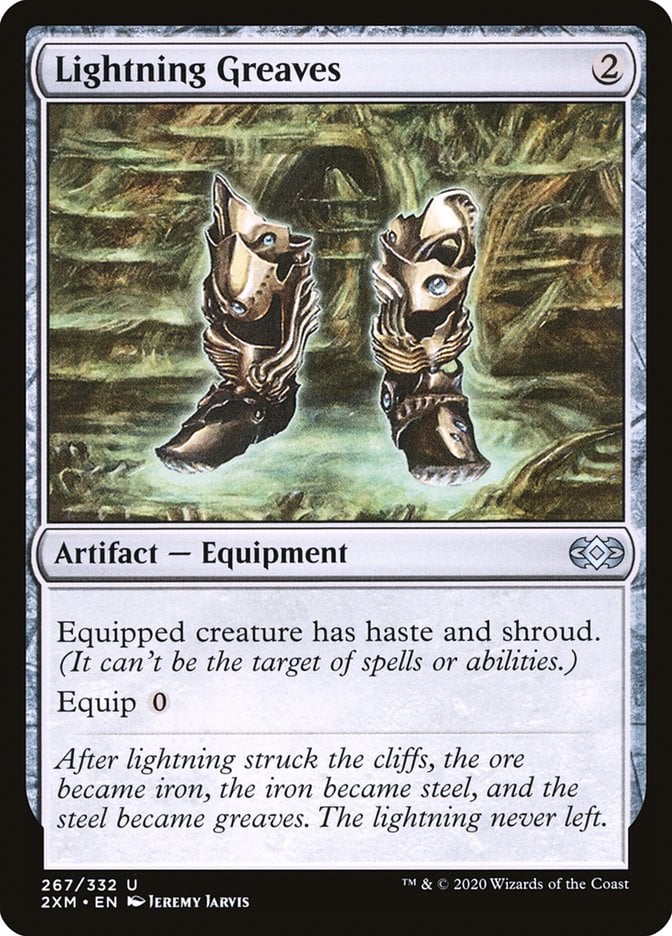
Crowd-favorite Lightning Greaves takes fourth place on the back of being one of the most popular Commander cards. One of the first interaction new players have with shroud these days is in casting or playing against Greaves. The card doesn’t often show up in Constructed, but its power is inarguable.
#3. Argothian Enchantress
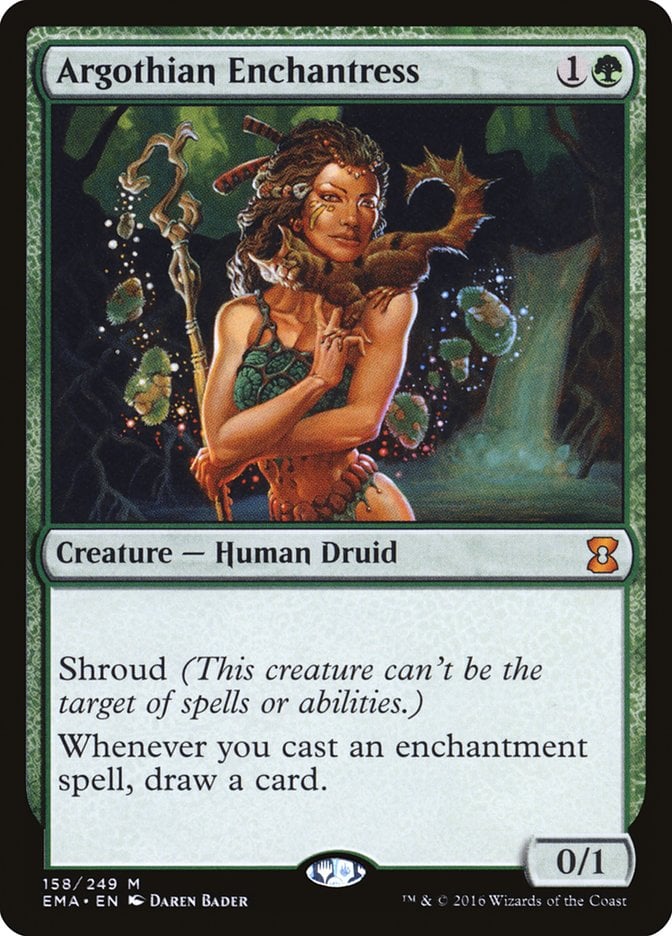
Coming in at third place is Argothian Enchantress. A centerpiece of Enchantress decks since its printing, it’s unquestionably a powerful engine that lets players do some ridiculous things. Though not reprinted in Modern Horizons like Sterling Grove, an Enchantress-facsimile was printed in the form of Sythis, Harvest's Hand. The deck exists in both Legacy and Modern now, though its susceptibility to hate puts an upper limit on its metagame presence.
#2. Morphling
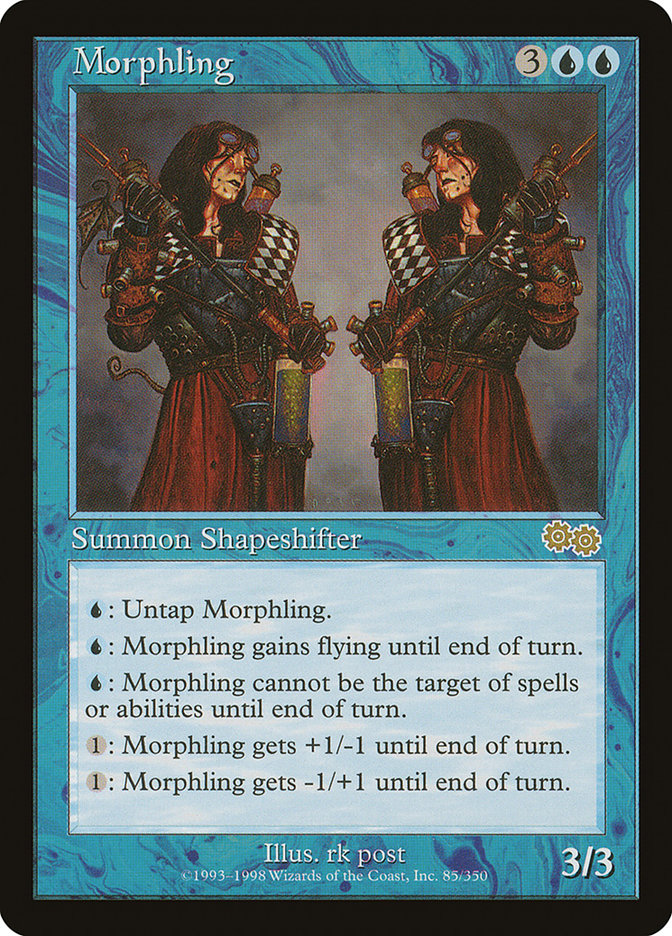
The OG best creature in the game makes its appearance at #2 on the list. Speaking of lists, Morphling was one of the last cards added to the Reserved List. It was spout there because of its unique and powerful abilities, ones that let it dominate other creatures in the days when damage still used the stack.
While it doesn’t naturally have shroud, the ability to get it for a single mana is almost as good.
#1. Sylvan Safekeeper

The spider rider takes its rightful place among the top users of the shroud mechanic. Even cheaper than paying a mana, using a land to give itself shroud is basically the same as having shroud. What sets Sylvan Safekeeper apart from the rest is the ability to cheaply and instantaneously give shroud to any of your creatures, which effectively blanks your opponents' removal as long as Safekeeper sits in play.
The fact that it costs makes it efficient enough to see play in Legacy where it mostly protects big Knight of the Reliquary and Marit Lage tokens. It’s also used in cEDH where it’s an easy include in most green decks that rely heavily on their commander, like Korvold, Fae-Cursed King or Chulane, Teller of Tales.
Shroud Decks
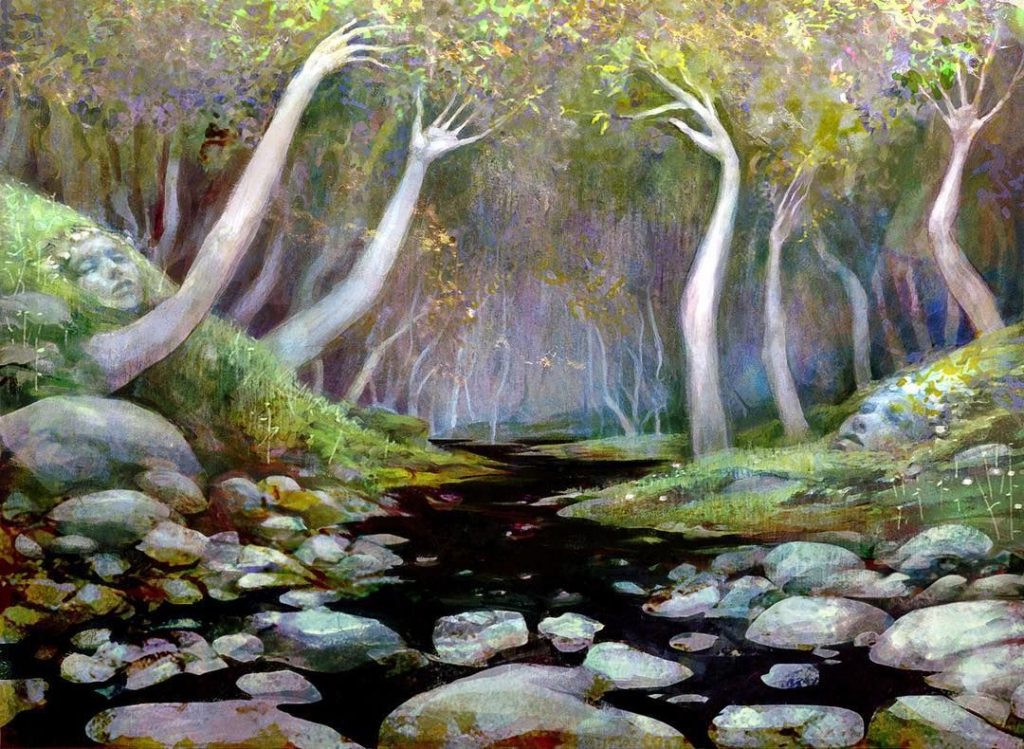
Sterling Grove | Illustration by Seb McKinnon
There isn’t much support for a dedicated shroud deck given the mechanic’s status as a power check to interactive decks and the fact that it’s largely been discontinued since 2011. So instead of presenting you with a deck that’s built around the mechanic, I’ve got three decks that I’ve mentioned before: Gruul Spiders, Fires, and Heezy Street.
Gruul Spiders
Creatures (21)
Deadly Insect x4
Storm Shaman x2
Fyndhorn Elves x4
Giant Trap Door Spider x4
Gorilla Shaman
Orcish Cannoneers x2
Woolly Spider x4
Instants (6)
Incinerate x4
Giant Growth x2
Sorceries (7)
Jokulhaups
Pillage x3
Pyroclasm
Lava Burst x2
Enchantments (2)
Stormbind x2
Artifacts (6)
Urza's Bauble x4
Lodestone Bauble x2
Lands (18)
Forest x7
Mountain x7
Karplusan Forest x4
Sideboard (15)
Anarchy
Essence Filter x2
Icy Manipulator
Jester's Cap
Jokulhaups
Monsoon
Primitive Justice
Pyroblast x2
Pyroclasm x2
Vexing Arcanix x2
Zuran Orb
Fires
Creatures (20)
Ancient Hydra x2
Birds of Paradise x4
Blastoderm x4
Kavu Chameleon x2
Llanowar Elves x4
Rith, the Awakener
River Boa x3
Instants (5)
Urza's Rage x3
Wax // Wane x2
Enchantments (8)
Fires of Yavimaya x4
Saproling Burst x4
Artifacts (4)
Lands (23)
Brushland x4
City of Brass x2
Forest x6
Karplusan Forest x4
Mountain x3
Rishadan Port x4
Sideboard (15)
Kavu Chameleon
Rith, the Awakener
Earthquake x3
Aura Mutation x2
Obliterate x2
Hurricane x2
Tangle x2
Flashfires x2
Heezy Street
Creatures (27)
Burning-Tree Shaman x4
Dryad Sophisticate x4
Frenzied Goblin x3
Giant Solifuge x4
Kird Ape x4
Scab-Clan Mauler x4
Scorched Rusalka x4
Instants (7)
Char x4
Flames of the Blood Hand x3
Enchantments (3)
Lands (23)
Forest x6
Karplusan Forest x4
Mountain x7
Skarrg, the Rage Pits x2
Stomping Ground x4
Sideboard (15)
Blood Moon x4
Flames of the Blood Hand
Naturalize x2
Rumbling Slum x2
Tin Street Hooligan x2
Umezawa's Jitte x4
Wrap Up
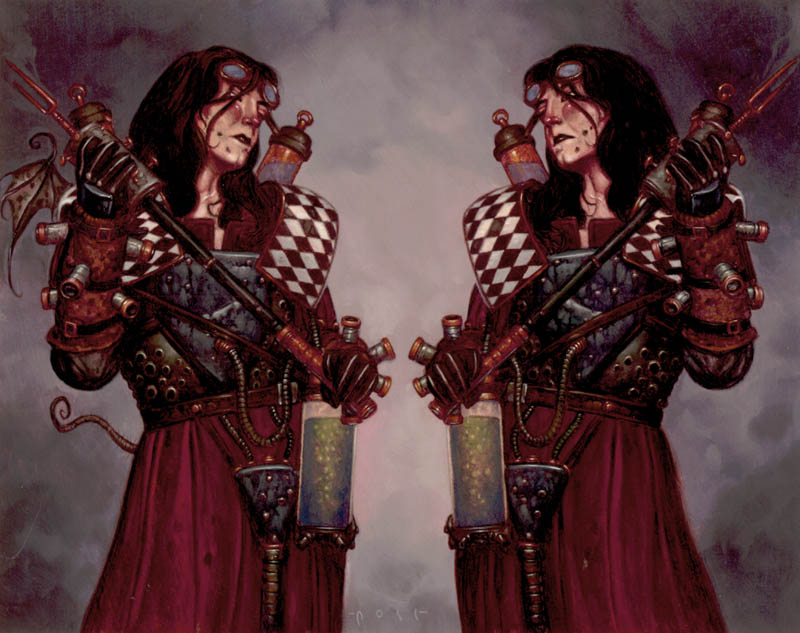
Morphling | Illustration by rk post
Shroud is one of the few mechanics that reached evergreen status only to be discontinued. Printing too many creatures with shroud would have caused interactive gameplay to suffer, while printing too few would have let controlling decks dominate. What makes shroud so cool from a design perspective is how much added value it can give a creature beyond combat stats. It was replaced by hexproof in an attempt to make the game more intuitive, a mechanic that largely has the same role but also offers opportunity to make big voltron monsters by loading up on auras and equipment.
Though shroud doesn’t appear on new cards anymore it still endures, a testament to the strong design of cards featuring the mechanic. While some players like myself miss the mechanic, there are others who love loading up their Invisible Stalkers and Slippery Bogles to kill their opponents in one hit. Maybe one day shroud will make its comeback, even though it looks like hexproof is here to stay.
Do you miss shroud like I do? Or do you enjoy looking at the hopeless faces of your opposing control players as their Doom Blades and Path to Exiles fall flat in the face of your un-targetable creatures? Share your thoughts in the comments down below or in the official Draftsim Discord.
Until the next time I wax poetic on the mechanics of yore, have a good time slinging cardboard across the table!
Follow Draftsim for awesome articles and set updates:



Add Comment